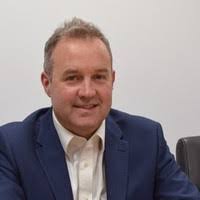High voltage infrastructure is key in our transition to net zero as we make the change to electric vehicles (EVs). Powersystems UK are installing the high-voltage cable for Energy Superhub Oxford, and Chris Jenkins, Managing Director at Powersystems, tells us more.
Tell us about Powersystems and your role
Powersystems is a specialist, high voltage electrical engineering company, founded in 1977. That was a very interesting year for technology with Concorde’s first commercial flight, the first space shuttle test flight, and also the first release of personal computers.
Our first renewable energy projects were in the late 1980s. That was the beginning of applying our high voltage skills to the renewable energy industry. In 2021, we’re using all that technology to accelerate the transition to a carbon-free, net zero future.
We’re working on a large portfolio of projects at the moment including; wind, nuclear and battery storage, all supporting the grid. We also recently reset our company vision to ‘powering the transition to a carbon-free future’. It aligns very well with Energy Superhub Oxford.
What is Powersystems role in Energy Superhub Oxford (ESO)?
We’re the principal contractor for the electrical works that will connect Pivot Power’s Cowley battery to the electric vehicle (EV) charging hub at Redbridge Park and Ride, and the Oxford Bus Company.
Currently, we’re overseeing the installation of the five miles of 33,000 volt cables from the substation and battery storage facility, which ultimately will feed the transformers for EV charging. We’ve completed the first part of the works across the farmers’ fields and now our team is progressing along the road towards the Oxford Bus Company, next to the eastern bypass cycle strip. The work in the agricultural land is quick, however, as soon as you get onto the highway, there are more stakeholders and asset owners to consider, so the going gets a little tougher.

Is there anything new or innovative about what you’re doing?
The infrastructure required to connect and distribute electricity is long established. What is innovative about this project is the joining up and combining of different technologies and the way these assets are connected directly to the high voltage transmission network. It’s enabling greater use of renewable power and helping deliver this power where it is needed for EV charging. We’re the glue that allows it to be connected up so that consumers can benefit.
Have you faced any particular challenges along the way?
We’ve faced a combination of COVID restrictions, Brexit delays, shipping holdups, lack of raw material availability, and rising costs which are challenging all British businesses now. Obviously, we try and combat these as best as we can, and we’re keeping good lines of communication and mitigating the risks with all the stakeholders on the project to minimise any disruption or impact.
What excites you most about Energy Superhub Oxford?
Energy Superhub Oxford showcases a lot of British companies working together with different specialities from science, to engineering, to manufacturing and technology, and all of us are equally ambitious to make it happen. It is pioneering, bringing those technologies together to show what can be done to benefit the environment and climate and leading the way for other cities to follow.
What impact do you hope the project will have on Oxford and the UK as a whole?
The obvious impacts are stated in the ambitions of the project – to take 10,000 tonnes of carbon dioxide out of the energy mix, equivalent to 2,000 cars a year – and that’s set to rise to 25,000 tonnes by 2032.
Additionally, we’re hoping it will help to accelerate the switch to electric heating, EVs and show the public that renewable infrastructure is being rolled out. We all have a part to play in cutting carbon emissions to improve air quality, and if the project can inspire other councils to follow a similar route, and show people how they can benefit, that’s a good thing for everyone.
What changes do you hope to see in the energy sector over the next decade?
We’re going to see massive changes in the energy sector in the next decade. The current gas crisis highlights that. Obviously, we’ve got ambitious net zero emission targets by 2050 and certainly we’re going to see increased EVs and, with the phase out of gas boilers in favour of electric heating for houses.
Behind the scenes, our grid infrastructure needs to undergo massive upgrades and modernisation to cope with these changing demands. It hasn’t changed since it was built in the 1960s. Now, we’ve got a huge amount of distributed, renewable generation and the grid needs to keep up.
The problem is some of this stuff is beyond people’s lifetime – it’s 50 to 100 years in the future. That’s why governments need to lead with a long-term vision. Energy Superhub Oxford is showing how things can be done differently.
What do you hope will come of COP26?
Hopefully political leaders will come together and make firm commitments to tackle climate change. We need clear outcomes from what our broad brushstroke, highbrow political parties say to translate into real actions, whether it be from a planning perspective or financing. So that many more projects, like Energy Superhub Oxford, can be implemented to support the transition to net zero in the UK and hopefully lead the way for other countries to follow.

